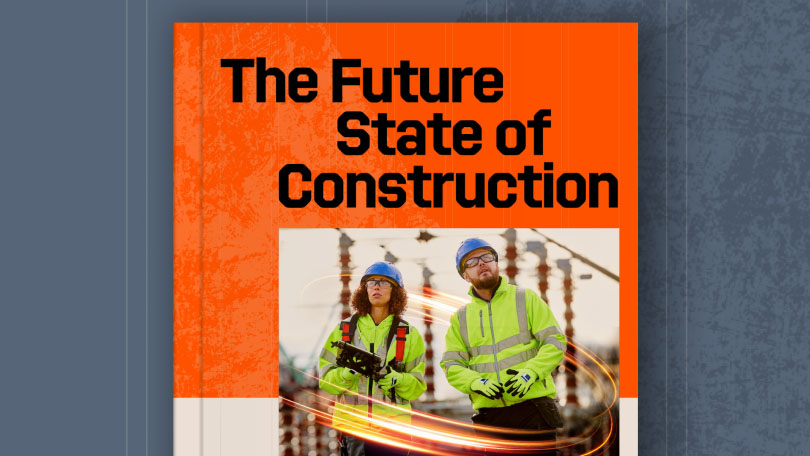— 4 min read
Powerful Communication in Construction: Building Stronger Teams
Last Updated Aug 28, 2025
James Overton
James Overton, based in London, England, is a subject matter expert in construction and engineering. He has held key positions such as Commissioning and Competency Manager at Laing O’Rourke and Project Quality Manager at Buildcorp, underscoring his deep expertise in project quality. James's academic achievements include a Master’s in Infrastructure and Transport Engineering from Monash University and a Bachelor’s in Materials Engineering from the University of Wollongong. His extensive industry experience informs his insights into construction best practices and engineering processes.
Nicholas Dunbar
Content Manager
62 articles
Nick Dunbar oversees the creation and management of UK and Ireland educational content at Procore. Previously, he worked as a sustainability writer at the Building Research Establishment and served as a sustainability consultant within the built environment sector. Nick holds degrees in industrial sustainability and environmental sciences and lives in Camden, London.
Last Updated Aug 28, 2025

Strong communication between office teams and on-site workers is the backbone of successful construction projects. Yet, too often, these teams are disconnected, lacking a clear communication strategy. For projects to run smoothly, both office and site workers need accurate, timely information. When communication breaks down, small issues quickly escalate into costly problems. Let’s explore how improving communication can transform construction projects.
Table of contents
The Risks of Poor Communication
When communication between office and on-site teams fails, the consequences can be serious. Miscommunication frequently leads to discrepancies between the planned design and the final build, resulting in client dissatisfaction and costly rework.
Ultimately, poor communication leads to financial loss. In construction, every decision ties back to cost — it’s the industry’s universal language.
But financial setbacks aren't the only concern. Quality and safety risks also arise when teams don’t communicate effectively, endangering both on-site workers and those occupying the completed project. Inadequate communication can lead to injuries or even fatalities, making it imperative for construction teams to get it right. Beyond the immediate danger, communication failures can result in legal liability, reputational damage and increased costs.
Creating a Culture of Strong Communication
Avoiding these risks requires an intentional approach, starting with a company’s culture and leadership. At the core of effective communication is mutual understanding — not just of the message being conveyed but of each team member’s role, priorities, and preferred communication style.
I don't believe in providing skill training to only certain people when it comes to communication and upskilling. If you're a QS, you should still understand the basic principles of construction, structures, waterproofing services, and so on. Understanding these things is essential because it's the industry you work in, and it helps you communicate and connect with your peers.
James Overton
When teams share a baseline understanding, they can collaborate more efficiently. Workers know who to approach with questions, and information flows more freely, reducing costly mistakes and delays.
Learn about the future of the built environment - Read Procore's Future State of Construction report
Learn how contractors, subcontractors, and project teams can take advantage of new opportunities to boost efficiency and profitability over the next decade. Download the report to get your roadmap to the future state of construction.

Encouraging Collaboration Through Office Design
Leadership can encourage proactive communication in many ways, including the physical workspace setup. Traditionally, office teams and site workers are separated — quantity surveyors in one room, site staff in another — limiting opportunities for meaningful interaction.
However, small changes can have a big impact. Seating teams together by project rather than department encourages better collaboration. For example, grouping plumbing staff with those responsible for related tasks develops more natural and effective communication.
Even simple initiatives like regular team lunches can strengthen rapport and improve understanding. Communication is a skill best developed through practice, and encouraging interaction — both in the workplace and socially — can go a long way in building stronger teams.
In one team, did a cooking class together. Soft skills sessions like these are often overlooked or even dismissed by the construction industry, and I believe that's a major factor in poor communication. But, these sessions are highly effective.
James Overton
Balancing Technology with Face-to-Face Interaction
Once a solid foundation of trust, respect and understanding is in place, technology can further enhance communication between teams. However, without strong interpersonal communication, digital tools can create more problems than they solve.
A successful approach balances face-to-face interaction with technology, ensuring that digital tools support, rather than replace, human connection.
I’m a huge proponent of people having face-to-face conversations, but technology can definitely be used to facilitate certain elements of a project. There needs to be a balance. Some conversations can be a quick 5-minute chat, but an overreliance on in-person communication can affect record-keeping, which is a compliance issue.
James Overton
How Technology Enhances Communication in Construction
- Record-keeping for Accuracy and Compliance
One of the biggest advantages of using technology in construction is the ability to maintain a clear record of decisions, timelines and responsibilities. This provides a reliable source of truth, reducing the risk of misinterpretation. Workers can reference past communications to clarify details, ensuring accuracy in costs, schedules, and project specifications. Additionally, digital records support compliance by meeting industry requirements that verbal communication alone cannot fulfill.
- Boosting Efficiency with Centralised Communication
A centralised communication platform, such as Procore, streamlines collaboration. Instead of making frequent trips to the office for updates, site workers can access messages, documents and schedules instantly via mobile devices or tablets. This reduces downtime and keeps projects moving efficiently.
- Supporting Neurodiverse Team Members
Technology also promotes inclusivity by accommodating different communication needs. For neurodivergent team members who may struggle with in-person cues like body language or tone, written communication provides clarity. Digital messaging also helps individuals with ADHD or short-term memory challenges by offering written instructions they can revisit as needed. Used effectively, technology empowers all team members to perform at their best.
Prioritising Communication for Project Success
In construction, communication is not just a skill — it’s a necessity. It influences every aspect of a project, from budget management to worker safety. While technology provides valuable tools, teams must first master the fundamentals of clear, effective communication. Once they do, they can unlock greater efficiency, collaboration and project success.
Categories:
Written by
James Overton
James Overton, based in London, England, is a subject matter expert in construction and engineering. He has held key positions such as Commissioning and Competency Manager at Laing O’Rourke and Project Quality Manager at Buildcorp, underscoring his deep expertise in project quality. James's academic achievements include a Master’s in Infrastructure and Transport Engineering from Monash University and a Bachelor’s in Materials Engineering from the University of Wollongong. His extensive industry experience informs his insights into construction best practices and engineering processes.
View profileReviewed by
Nicholas Dunbar
Content Manager | Procore
62 articles
Nick Dunbar oversees the creation and management of UK and Ireland educational content at Procore. Previously, he worked as a sustainability writer at the Building Research Establishment and served as a sustainability consultant within the built environment sector. Nick holds degrees in industrial sustainability and environmental sciences and lives in Camden, London.
View profileExplore more helpful resources

Control the Chaos: Standardising Document Workflows in Construction Projects
Document control and implementation play a central role in managing risk, meeting deadlines, and delivering projects to spec. As builds become more complex and teams increasingly disperse, the volume and...

Cost-Plus Construction Contracts in the UK
A construction cost-plus contract – sometimes called a cost-reimbursable or prime cost contract – reimburses all project costs and adds a fee to cover the contractor’s overhead and profit. UK...

Digital Construction Technology for Whole-Life Value
For decades, the construction industry has kept a narrow focus on capital cost — the one-time, upfront costs of a construction project. While in the short term this seems like...

UK Construction Progress Reports: Tools for Smarter Site Management
Construction progress reports track completed work, on site issues, costs, and safety so UK project teams can demonstrate progress, secure payments, and stay on programme. Accurate progress data is essential...
